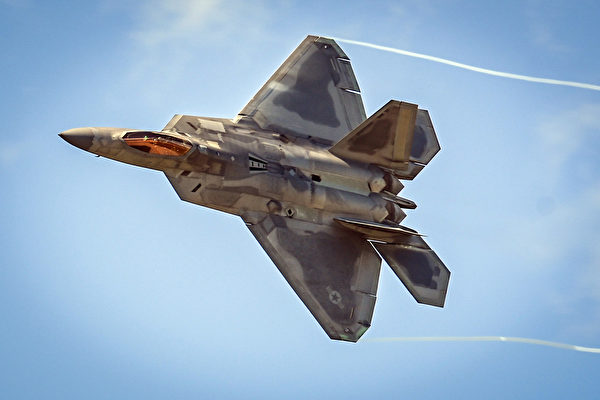Lockheed Martin, the US defense contractor, produces two fifth-generation fighter jets: the F-35 and the F-22. While the F-35 has been widely exported to allied countries, the F-22 has never been sold to foreign nations, even when there is demand. Why is that?
The F-22 is the world’s first mass-produced fifth-generation fighter jet with cutting-edge technologies. This stealth aircraft was designed to replace the previous generation mainstay, the F-15.
Unlike other high-performance fighter jets like the F-15, F-16, and F-35 that have been exported, the F-22 is exclusively used by the US Air Force and has never been exported. Currently, there are 183 F-22 aircraft in the inventory of the US Air Force, distributed across different commands.
In response to the US never exporting the F-22, the aviation news website “Simple Flying” outlined three possible reasons:
Firstly, the US Air Force asserts that the F-22 possesses highly classified stealth technology. It is the first fighter jet to integrate stealth technology, advanced avionics systems, supersonic cruising, and supermaneuverability, achieving superior combat capabilities and survivability.
The department stated that no known or planned aircraft could match the capabilities of the F-22.
Since the F-22 was not designed for export, its design incorporates proprietary technologies. The US government and Air Force are committed to protecting these technologies to prevent hostile nations from acquiring and using them against the US.
In 1998, the US Congress passed an amendment prohibiting the export of F-22 fighter jets.
Over the years, countries like Japan, Australia, and Israel have repeatedly requested the US to sell them F-22 aircraft, all of which have been declined. The US does not consider selling the F-22 as it still maintains a leading position in stealth technology and intends to continue this status quo.
When it comes to US military exports to other countries, pleasant experiences are not guaranteed. For instance, the US sold F-16 jets to Israel, which later cancelled its domestically developed Lavi fighter jet program and shared related technologies with China. China’s J-10 fighter is heavily inspired by the F-16.
Additionally, Iran acquired American-made F-14 jets before the 1979 revolution, which are still in use today.
The US Congress has not authorized the US government to develop an export version of the F-22 fighter jet. Despite the US selling many military aircraft, the F-22 has yet to be sold to other countries.
The prohibitively high maintenance costs of the F-22 may also contribute to the US decision not to sell the aircraft.
Designed as an air superiority fighter dedicated to a single mission, the F-22 is not a multi-role aircraft like the F-35. When carrying out air-to-ground missions, the F-22 can only carry two types of weapons: the 1,000-pound Joint Direct Attack Munition and Small Diameter Bomb, due to its internal weapons bay design.
The high cost associated with operating a high-end aircraft solely for air superiority and limited air-to-ground combat missions is likely unaffordable for other countries.

